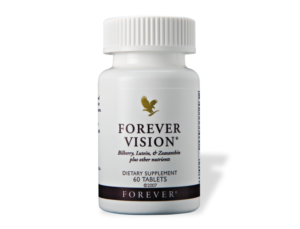Protect your eyes, protect your vision. Is your vision blurry? cataracts are common as you age – but that does not mean you just sit back.
Protect your eyes, protect your vision.
Is your vision blurry?
What are cataracts?
Cataracts are caused by a build-up of protein that clouds the eye’s lens, which can lead to blurred vision and eventual blindness.

Cataracts are often thought to only affect older people, but in developing countries they are a huge problem for children too.
Cataracts can be present from birth, or may develop as a result of eye injuries or following eye surgery for other problems. Although cataracts are not difficult to treat, it’s vital for children that the condition is caught in time or it can cause the eye to stop developing, meaning sight can never be properly restored
Cataracts simulator
What does the world look like when you have cataracts?
Cataracts are caused by a build-up of protein that clouds the eye’s lens, which can lead to blurred vision and eventual blindness. Everyone experiences this sight loss differently, but to give you an idea of what it’s like, we’ve created the cataract simulator below.
To use the vision simulator, enter an address, location or postcode in the box below and click Go. You’ll then be taken to your location and shown what it would look like if you had cataracts. Use the left and right buttons on your keyboard, or the left and right buttons on the side of the map, to rotate the screen.
What Causes Cataracts?

The lens inside the eye works much like a camera lens, focusing light onto the retina for clear vision. It also adjusts the eye’s focus, letting us see things clearly both up close and far away.
The lens is mostly made of water and protein. The protein is arranged in a precise way that keeps the lens clear and lets light pass through it.
But as we age, some of the protein may clump together and start to cloud a small area of the lens. This is a cataract, and over time, it may grow larger and cloud more of the lens, making it harder to see.
No one knows for sure why the eye’s lens changes as we age, forming cataracts. But researchers worldwide have identified factors that may cause cataracts or are associated with cataract development. Besides advancing age, cataract risk factors include:
- Ultraviolet radiation from sunlight and other sources
- Diabetes
- Hypertension
- Obesity
- Smoking
- Prolonged use of corticosteroid medications
- Statin medicines used to reduce cholesterol
- Previous eye injury or inflammation
- Previous eye surgery
- Hormone replacement therapy
- Significant alcohol consumption
- High myopia
- Family history
One theory of cataract formation that’s gaining favor is that many cataracts are caused by oxidative changes in the human lens. This is supported by nutrition studies that show fruits and vegetables high in antioxidants may help prevent certain types of cataracts (see below).
IT NOT TOO LATE OR TOO LATE TO START PROTECTING YOUR VISION……..
WHAT IS GLAUCOMA?
Glaucoma is relatively common, especially in older adults and can cause damage to the optic nerve if left untreated.
In this article, we will cover the causes, symptoms, and treatment of glaucoma. We will also explain the different types and possible surgical procedures.
Fast facts on glaucoma:
- Glaucoma has been called the silent thief of sight.
- The main types of glaucoma are open-angle and closed-angle.
- Age and thyroid problems increase the risk of glaucoma.
- Symptoms can include severe eye pain.
- Treatment includes surgery and medications.
- Treatment includes surgery and medications.
WHAT IS GLAUCOMA?
In short, glaucoma is a build up of pressure within the eye that causes damage to the optic nerve.
There is a small space in the front of the eye called the anterior chamber. Clear liquid flows in and out of the anterior chamber, this fluid nourishes and bathes nearby tissues. If a patient has glaucoma, the fluid drains too slowly out of the eye. This leads to fluid build-up, and pressure inside the eye rises.
Unless this pressure is brought down and controlled, the optic nerve and other parts of the eye may become damaged, leading to loss of vision.
The disease usually affects both eyes, although one may be more severely affected than the other.
Eyedrops are a common and effective treatment for glaucoma.
In the majority of cases, initial treatment for glaucoma includes eye drops.
Compliance is vital for best results and to prevent undesirable side effects – this means following the doctor’s instructions carefully.
Examples of eyedrops include:
- prostaglandin analogues
- carbonic anhydrase inhibitors
- cholinergic agents
- beta blockers
Side effects of eyedrops can include stinging, redness, eyelash growth, change in eye color and occasionally retinal detachments and difficulty breathing. If eyedrops are not effective enough, the doctor may prescribe an oral carbonic anhydrase inhibitor.
Side effects are less if they are taken during meals. Initial side effects can include tingling in the fingers and toes and frequent urination – however, after a few days, they usually resolve.
Much less commonly, there is a risk of rashes, kidney stones, stomach ache, weight loss, impotence, fatigue, and a strange taste when consuming fizzy drinks.
CAUSES OF GLAUCOMA
Experts are unsure of the precise causes of glaucoma, but cases are divided into two categories:
- Primary glaucoma – this means that the cause is unknown.
- Secondary glaucoma – the condition has a known cause, such as a tumor, diabetes, an advanced cataract, or inflammation.
There are several risk factors for glaucoma:
- Old age.
- Ethnic background – East Asians, African Americans, and those of Hispanic descent have a higher risk of developing glaucoma, compared with Caucasians.
- Some illnesses and conditions – like diabetes or hypothyroidism.
- Eye injuries or conditions.
- Eye surgery.
- Myopia (nearsightedness).
CORTICOSTEROIDS
Patients on long-term corticosteroids have a raised risk of developing several different conditions, including glaucoma. The risk is even greater with eye drops containing corticosteroids.







